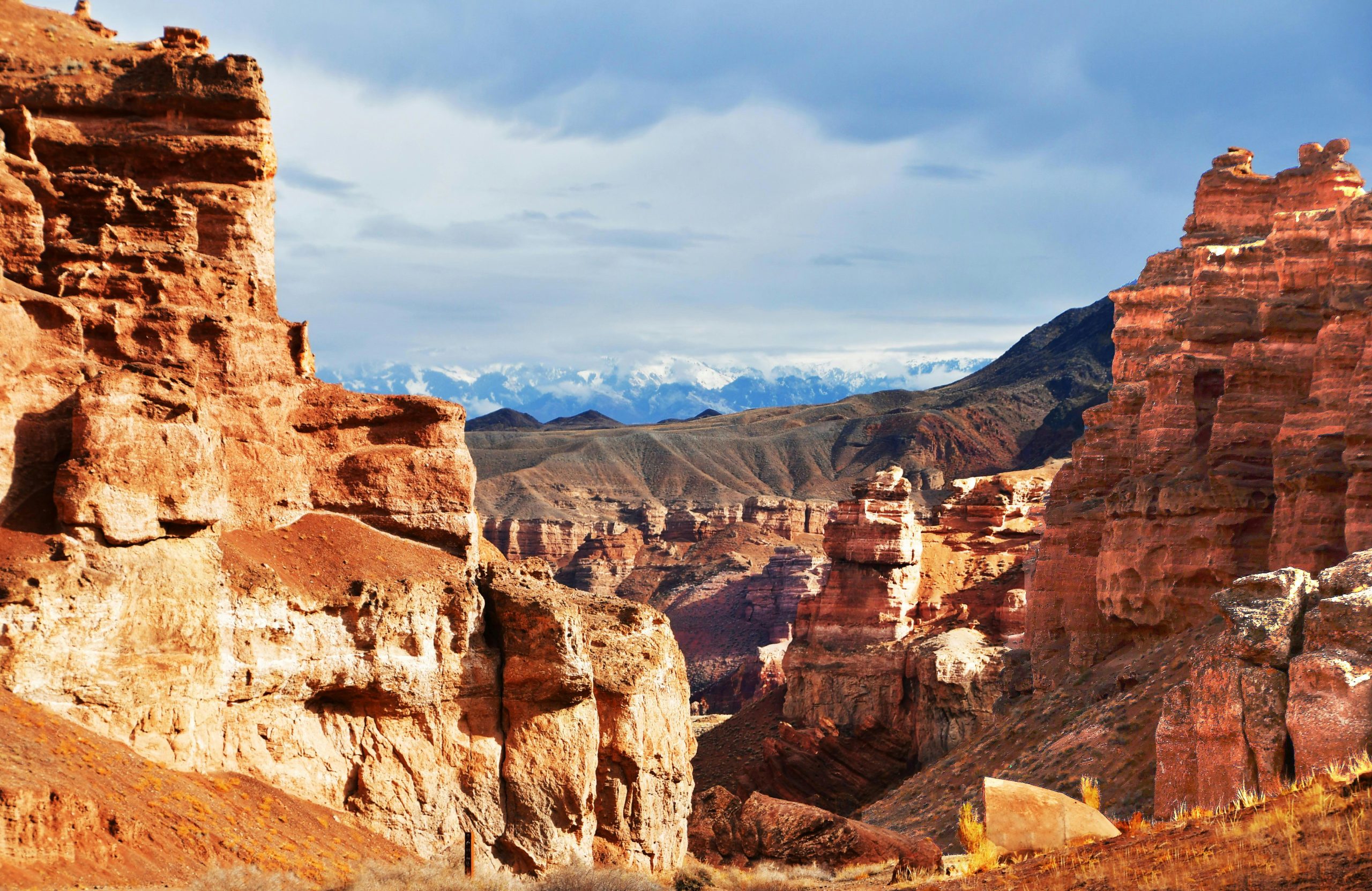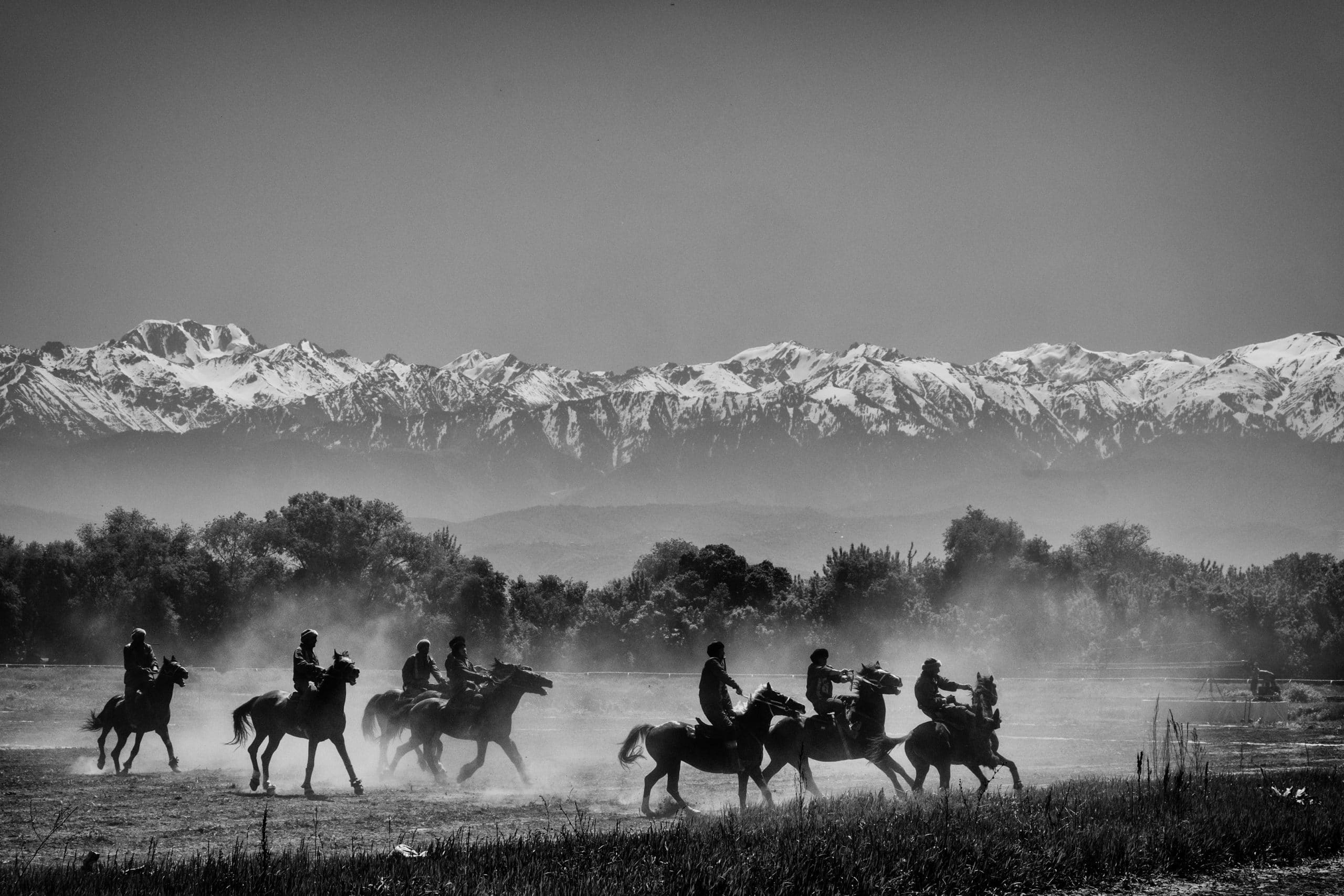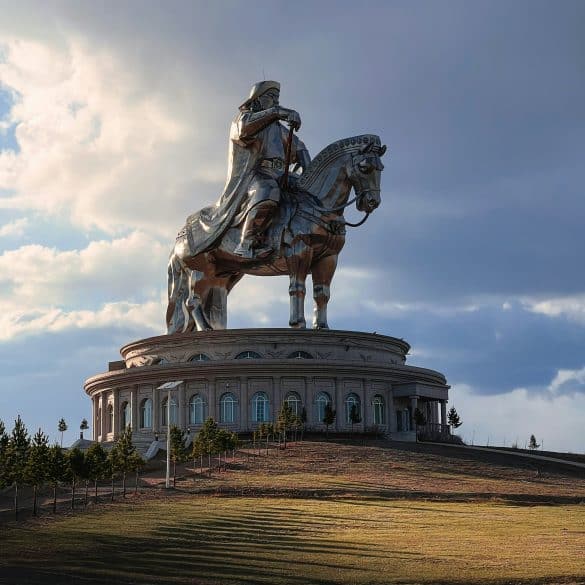Kazakhstan Culture and Society: A Complete Guide
You know, when I first started researching Kazakhstan’s cultural landscape, I honestly expected to find a relatively straightforward post-Soviet narrative. What I discovered instead was something far more fascinating—a complex tapestry of ancient nomadic traditions, Soviet-era influences, and modern independence that creates one of the most culturally rich societies in Central Asia.
Kazakhstan’s culture and society represent a remarkable fusion of East and West, tradition and modernity. Having worked extensively with Central Asian communities, I’ve come to appreciate how this nation of 19 million people maintains its distinct identity while navigating the challenges of globalization1.
Kazakhstan at a Glance
Kazakhstan is the world’s largest landlocked country, spanning over 2.7 million square kilometers. The nation is home to over 130 ethnic groups, with Kazakhs comprising approximately 68% of the population and Russians 19%. This diversity creates a unique multicultural society where traditional nomadic values coexist with modern urban lifestyles.
The Nomadic Foundation: Understanding Kazakhstan’s Cultural DNA
To really understand Kazakh society today, you’ve got to go back to the steppes. The nomadic heritage isn’t just history here—it’s living culture that still shapes how people think, interact, and organize their communities2.
What strikes me most about traditional Kazakh culture is how it developed around mobility and resourcefulness. The concept of “zhuz” (tribal confederation) created flexible social structures that could adapt to changing circumstances—something that proved incredibly valuable during the Soviet period and continues to influence modern Kazakhstan.
Actually, let me step back a moment. When I mention nomadic heritage, I’m not talking about some romanticized past. These were sophisticated societies with complex social hierarchies, trade networks, and cultural practices3. The Great Silk Road didn’t just pass through Kazakhstan—it fundamentally shaped the culture, creating a tradition of hospitality, trade, and cultural exchange that you can still see today.
The traditional Kazakh worldview emphasized several key principles that continue to influence modern society. First, there’s “guest is a blessing from God”—a hospitality tradition so strong that turning away a visitor was considered shameful. Then you have respect for elders, collective decision-making, and what I’d call “pragmatic spirituality”—a blend of Tengrist beliefs, Islamic practices, and shamanic traditions.
Soviet Legacy: Transformation and Adaptation
Here’s where things get complicated, and honestly, this is where I’ve had to revise my understanding multiple times. The Soviet period wasn’t just about suppression of traditional culture—it was about creating entirely new forms of Kazakh identity4.
The forced sedentarization of nomads in the 1930s fundamentally altered Kazakh society. But—and this is crucial—it didn’t eliminate traditional values. Instead, these values adapted and found new expressions. Family networks became even more important as survival mechanisms. Oral traditions shifted from preserving nomadic knowledge to maintaining cultural identity under Soviet rule.
- Industrial development created new urban centers while rural areas maintained traditional structures
- Soviet education system produced a highly literate population that could engage with both traditional and modern knowledge
- Collectivization ironically reinforced communal values already present in nomadic society
What really gets me is how resilient Kazakh culture proved to be. Even during the most intensive periods of Sovietization, families continued practicing traditional customs privately. They’d celebrate Nauryz (Persian New Year) as a “spring festival,” maintain clan relationships through Soviet institutional networks, and pass down traditional knowledge through informal channels.
Traditional Culture in Modern Context
Walking through Almaty or Nur-Sultan today, you’ll encounter something fascinating—a society that’s genuinely bilingual and increasingly trilingual. The language situation in Kazakhstan perfectly illustrates how traditional and modern elements blend in unexpected ways5.
Kazakh, the state language, carries tremendous cultural weight. It’s not just communication—it’s identity. The language contains thousands of years of nomadic wisdom, from weather prediction to animal husbandry. Russian, meanwhile, serves as the lingua franca for much of the educated population and connects Kazakhstan to the broader post-Soviet space.
Language Revival and Cultural Pride
Since independence, there’s been a conscious effort to revitalize Kazakh language and culture. Schools now teach in Kazakh, government documents are translated, and there’s growing pride in traditional arts and crafts. However, this revival isn’t about rejecting Russian or Western influences—it’s about creating a confident, multilingual society.
The arts scene tells a particularly interesting story. Traditional Kazakh music, with its distinctive dombra (two-stringed lute) and complex oral epic traditions, has found new life in modern interpretations. I’ve attended concerts where traditional akyn (folk singers) perform alongside contemporary artists, creating something entirely new yet deeply rooted6.
Family Structures and Social Hierarchy
Honestly, understanding Kazakh family dynamics was one of the most eye-opening aspects of my research. The traditional extended family system—what locals call “rukhani bonds”—creates social networks that Western individualistic societies often lack.
In traditional Kazakh society, family extends far beyond the nuclear unit. Seven generations of ancestors are remembered by name, and family connections determine everything from marriage possibilities to business partnerships. This isn’t just tradition—it’s practical social organization that provides security and opportunity7.
| Family Level | Traditional Role | Modern Adaptation | Social Function |
|---|---|---|---|
| Nuclear Family | Basic unit | Individual household | Daily support system |
| Extended Family | Clan segment | Regional network | Economic cooperation |
| Tribal Group | Political unit | Professional network | Career advancement |
What’s particularly fascinating is how these family structures have adapted to modern urban life. In cities like Almaty, you’ll find apartment buildings where multiple generations live in proximity, maintaining traditional support systems while pursuing contemporary careers.
Religious and Spiritual Practices
Religion in Kazakhstan presents another layer of complexity that took me a while to understand properly. The majority of ethnic Kazakhs identify as Muslim, but Islam here has been shaped by centuries of syncretism with Tengrist and shamanic traditions8.
This isn’t orthodox Islam as practiced in the Middle East. Kazakh Islam incorporates respect for nature spirits, ancestor veneration, and what I’d call “practical spirituality.” Many Kazakhs visit both mosques and sacred natural sites, seeing no contradiction between these practices.
The Soviet period complicated religious practice but didn’t eliminate it. Many families maintained Islamic traditions privately while participating in Soviet secular culture publicly. Since independence, there’s been a religious revival, but it’s distinctly Kazakh in character rather than imported from other Islamic countries.
Actually, I should mention that Kazakhstan’s religious landscape is notably diverse. The country is home to Russian Orthodox Christians, Catholics, Protestants, Jews, and Buddhists, among others. This religious pluralism reflects the broader multicultural nature of Kazakh society9.
Traditional Arts and Crafts in the Digital Age
One area where I’ve seen remarkable innovation is in traditional arts and crafts. Kazakh artisans are using modern techniques and global markets to revitalize ancient practices. Carpet weaving, felt making, and jewelry crafting have found new audiences both domestically and internationally.
The government has also played a role here, designating certain crafts as “cultural heritage” and providing support for artisan training programs. But what really excites me is seeing young Kazakhs incorporating traditional motifs into contemporary design—everything from fashion to architecture to digital art10.

Contemporary Social Dynamics and Challenges
Now let’s talk about where Kazakhstan is heading socially—because this is where things get really interesting, and honestly, sometimes contradictory. The country is experiencing rapid social change while trying to maintain cultural continuity, and it’s creating some fascinating tensions.
Urban-rural divides represent one of the most significant contemporary challenges. Cities like Almaty and Nur-Sultan are becoming increasingly cosmopolitan, with young professionals who are as comfortable in London or New York as they are at home. Meanwhile, rural areas maintain more traditional lifestyles and values11.
Generational Perspectives
The generation gap in Kazakhstan is particularly pronounced. Young Kazakhs often speak three languages fluently, engage with global culture through social media, and have career aspirations that extend beyond traditional paths. However, they also show strong interest in rediscovering their cultural heritage—just on their own terms.
Gender relations are evolving rapidly, though not always consistently. Traditional Kazakh society actually gave women considerable authority within certain spheres—particularly in family matters and some economic activities. The Soviet period expanded women’s roles significantly, and modern Kazakhstan has relatively progressive gender policies on paper12.
But here’s where I’ve had to adjust my understanding: progress isn’t linear. While women occupy important positions in government and business, traditional gender expectations persist in many areas. It’s not uncommon to meet highly educated women who are also expected to maintain traditional domestic roles.
Economic Development and Social Change
Kazakhstan’s oil wealth has created unprecedented opportunities but also new social challenges. The rapid economic development has produced a growing middle class with global aspirations, but it’s also increased inequality and created pressure on traditional social structures.
- Resource wealth has funded education and infrastructure development
- New industries have created employment opportunities beyond traditional sectors
- Urban development has attracted migration from rural areas
- Integration with global markets has increased cultural exchange
What strikes me most is how Kazakhs are navigating these changes without losing their cultural identity. There’s a conscious effort to modernize while maintaining distinctly Kazakh characteristics. This shows up in everything from architecture (traditional motifs in modern buildings) to cuisine (fusion restaurants serving updated traditional dishes)13.
Education and Cultural Transmission
The education system reveals a lot about Kazakhstan’s cultural priorities. Schools teach in both Kazakh and Russian, with increasing emphasis on English as a third language. But beyond language policy, there’s a conscious effort to integrate traditional knowledge with modern curricula.
I’ve visited schools where students learn traditional crafts alongside computer programming, where history classes include both world history and detailed study of Kazakh oral traditions. This isn’t just preserving the past—it’s creating a generation that can navigate both traditional and modern worlds14.
Cultural Diplomacy and International Relations
Kazakhstan’s approach to international relations reflects its cultural values of hospitality and mediation. The country has positioned itself as a bridge between East and West, using cultural diplomacy to enhance its international standing.
The government actively promotes Kazakh culture internationally while also showcasing the country’s multicultural character. This dual approach—celebrating Kazakh identity while emphasizing diversity—has become a key element of the nation’s soft power strategy15.
Actually, I think this reflects deeper cultural values. The traditional Kazakh concept of “ana tilim” (mother tongue) doesn’t just mean language—it encompasses the entire cultural worldview. But this worldview has always been flexible and adaptive, incorporating new influences while maintaining core values.
Social Media and Digital Culture
The digital revolution has created new spaces for cultural expression and social interaction. Young Kazakhs use social media to connect with global trends while also sharing traditional culture with international audiences. Instagram accounts featuring traditional Kazakh fashion, TikTok videos of traditional music, and YouTube channels teaching traditional crafts are creating new forms of cultural diplomacy.
But social media has also created new challenges. The rapid spread of information can sometimes conflict with traditional communication patterns, where elders were the primary source of cultural knowledge. Now, young people often know more about certain aspects of their culture than their parents, having researched it online16.
Cultural Preservation and Future Outlook
Looking ahead, Kazakhstan faces the challenge that many developing nations encounter: how to modernize without losing cultural identity. But having spent considerable time studying this society, I’m optimistic about their approach. The key lies in understanding that culture isn’t static—it evolves while maintaining core values.
The younger generation gives me particular hope. They’re not rejecting tradition; they’re reimagining it. Traditional Kazakh values like hospitality, respect for elders, and community solidarity are finding new expressions in modern contexts. Young entrepreneurs are starting businesses based on traditional crafts, tech workers are creating apps that teach Kazakh language, and artists are incorporating traditional motifs into contemporary works.
Sustainable Cultural Development
Kazakhstan’s approach to cultural preservation emphasizes living culture rather than museum pieces. Traditional practices are being adapted for modern use, ensuring they remain relevant while maintaining their essential character. This includes everything from updating traditional architecture for energy efficiency to creating modern versions of traditional music that appeal to young audiences.
The government’s cultural policies reflect this dynamic approach. Rather than simply preserving traditions, they’re supporting cultural innovation that builds on traditional foundations. This includes funding for artists who combine traditional and modern techniques, supporting research into traditional knowledge systems, and promoting cultural exchange programs17.
Challenges and Opportunities
Of course, there are challenges. Globalization pressure is real, and some traditional practices are genuinely at risk of disappearing. The migration of young people to cities means fewer people learning traditional rural skills. Climate change is affecting traditional pastoral practices that have been central to Kazakh culture for centuries.
But—and this is crucial—these challenges are being met with innovative solutions. Traditional ecological knowledge is being documented and integrated into modern environmental management. Urban cultural centers are teaching traditional skills to city dwellers. Digital platforms are preserving oral traditions and making them accessible to global audiences.
Actually, let me be honest here. Some aspects of traditional culture probably should evolve. Like any society, Kazakhstan has had to grapple with practices that don’t align with modern values of equality and human rights. The key is distinguishing between core values that should be preserved and specific practices that can be adapted or changed18.
Regional Influence and Global Connections
Kazakhstan’s cultural influence extends throughout Central Asia and beyond. The country’s success in balancing tradition and modernity serves as a model for other post-Soviet nations. Cultural festivals, educational exchanges, and business partnerships are spreading Kazakh cultural innovations throughout the region.
The Belt and Road Initiative has also created new opportunities for cultural exchange with China, while maintaining strong ties with Russia and developing relationships with Western countries. This multi-directional cultural engagement reflects traditional Kazakh values of hospitality and trade19.
Conclusion: A Living Culture in Transition
Kazakhstan’s culture and society represent something remarkable: a living example of how traditional values can adapt to modern realities without losing their essential character. The nomadic heritage that emphasized adaptability, hospitality, and community solidarity continues to shape contemporary Kazakh society in profound ways.
What I find most inspiring is the confidence with which Kazakhs approach cultural change. They’re not defensive about tradition or apologetic about modernization. Instead, they’re actively creating new forms of cultural expression that honor the past while embracing the future.
The success of this approach has implications beyond Kazakhstan. In a world where many societies struggle with the tension between tradition and modernity, Kazakhstan offers a model of cultural resilience and adaptive innovation. It’s not perfect—no society is—but it provides hope for how cultural diversity can thrive in an increasingly connected world.
For travelers, scholars, or anyone interested in cultural dynamics, Kazakhstan offers a fascinating case study in successful cultural adaptation. More than that, it offers a warm welcome and the chance to experience a society that genuinely values both its heritage and its future.
References
Cambridge University Press, Journal of Nationalities Papers, 2020
Central Asia Program, George Washington University, 2019
Silk Road Research Foundation, 2018
Journal of Central Asian Studies, JSTOR, 2017
International Association of Anthropological Studies, 2019
Ministry of Culture and Sports, Kazakhstan, 2021
World Bank Development Studies, 2019
The Economist Intelligence Unit, 2019
Ministry of Education and Science, Kazakhstan, 2021
Digital Society Institute, 2021


